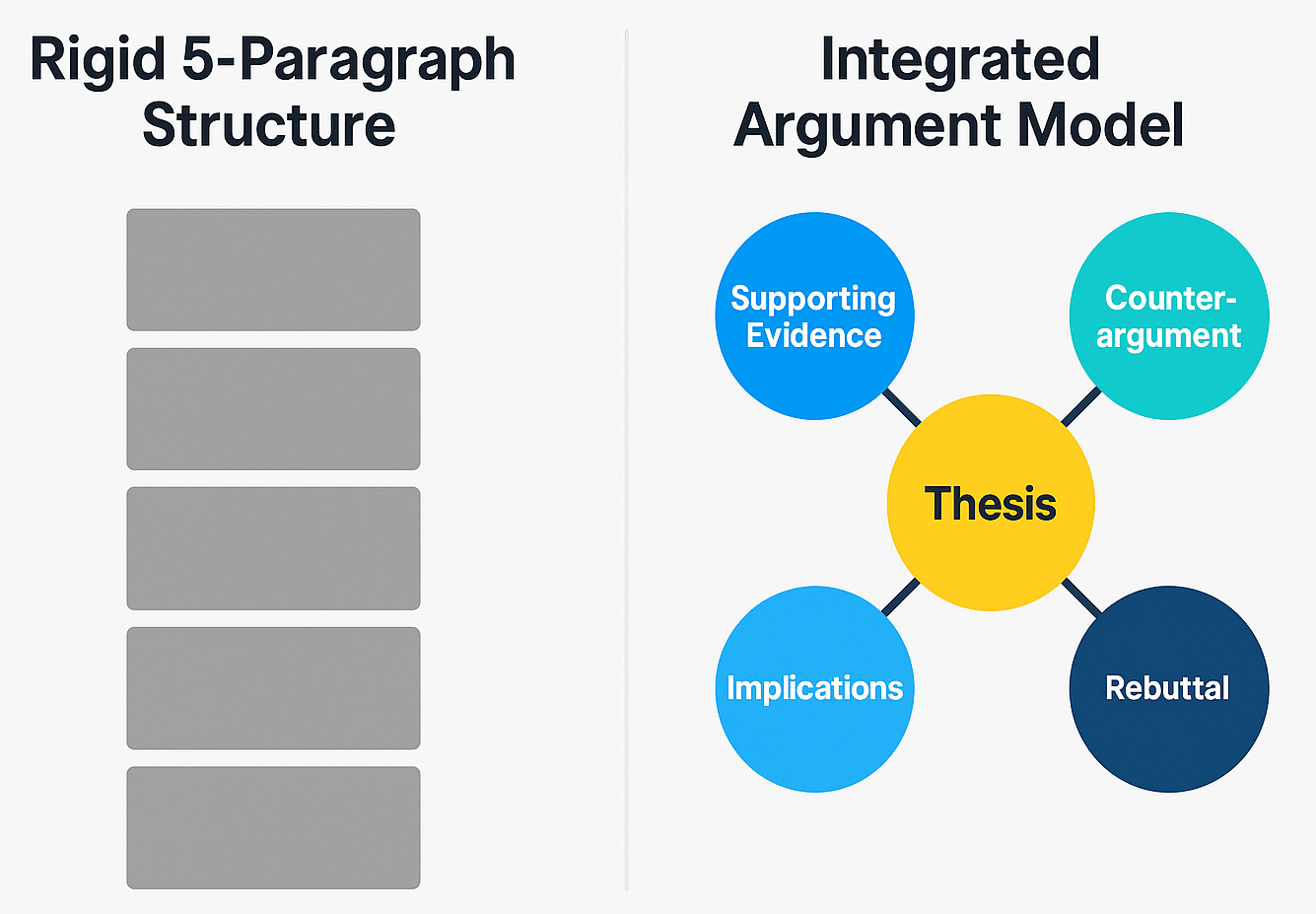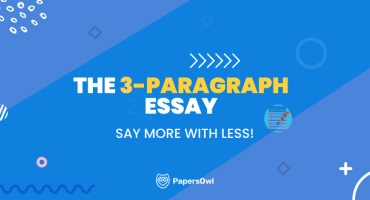Forget the 5-Paragraph Essay: This New Format Wins at Top Universities
Table of contents
For years, it was the golden rule of academic writing, drilled into us in high school: the five-paragraph essay. It had an introduction with a three-point thesis, three body paragraphs to support each point, and a conclusion to wrap it all up. It was safe. It was structured. And at the university level, it’s quickly becoming obsolete.
Let’s be real: college-level thinking isn’t about fitting complex ideas into a rigid, pre-made box. Top universities aren’t looking for students who can follow a formula. They’re looking for thinkers who can engage in a genuine, intellectual conversation, and your writing needs to reflect that.
So, if the five-paragraph essay is out, what’s in? Welcome to the format that will elevate your academic writing: The Integrated Argument Model.
Why the 5-Paragraph Essay Fails in College
Before we dive into the new model, let’s diagnose the problem. The five-paragraph structure teaches you to present isolated ideas, but it actively discourages the most critical skill in higher education: synthesis. University-level writing connects ideas, explores nuances, and grapples with conflicting evidence. The old format is too rigid to allow for this kind of deep, critical thinking [1].
The New Standard: The Integrated Argument Model
Think of your essay less like a checklist and more like a guided conversation with your reader. The Integrated Argument Model moves beyond a simple “prove-it” structure and embraces a more dynamic approach. Here’s what it looks like in practice.

Step 1: Start with a Nuanced Question, Not a 3-Point Thesis
Instead of starting with a rigid thesis like, “Technology has three main effects on society,” begin with a compelling question or a debatable problem.
- Example: “While technology promises to connect us, to what extent is it fostering deeper forms of social isolation?”
This immediately signals your professor that you’re thinking critically, not just listing points.
Step 2: Embrace the Counterargument
This is the biggest level-up from the old model. A strong academic paper doesn’t pretend that opposing views don’t exist. It actively seeks them out and engages with them. Dedicate a section of your essay to addressing a valid counterargument to your main point. Then, explain why your position is still more convincing. This demonstrates intellectual maturity and strengthens your argument immensely [2].
Step 3: Synthesize, Don’t Just List
Don’t let your paragraphs be lonely islands, each dedicated to one idea. Show how your points connect and build on one another. Use transition phrases that demonstrate a logical progression:
- “Building on this idea, the data also suggests…”
- “This economic factor is significant, but its social implications are even more profound.”
- “While this source argues X, it fails to consider Y, reinforcing the central problem.”
Step 4: Answer the “So What?” Question
Your conclusion is no longer just a summary. It’s your final, decisive move. Answer the “So what?” question: Why does your argument matter? What are the broader implications of your findings? This is where you show your professor the true significance of your work [3].
Let’s See It in Action: A Before & After
Essay Prompt: Evaluate the impact of remote work on company culture.
BEFORE (The 5-Paragraph Model):
“Remote work has three main impacts on company culture: it affects communication, employee engagement, and work-life balance. This essay will discuss these three points.” (Simple, predictable, uninspired).
AFTER (The Integrated Argument Model):
“While Silicon Valley once championed remote work as the key to employee freedom and productivity, a growing body of evidence suggests its hidden cost is the slow erosion of a cohesive company culture. Though proponents rightly argue that flexibility can boost morale, this perspective also overlooks how the lack of spontaneous, in-person interaction fundamentally hinders the mentorship and shared identity that define a strong culture. Without deliberate intervention, the long-term efficiency promised by remote work may be undermined by a workforce of disconnected individuals.” (Complex, engaging, and presents a real argument with nuance).
Your Takeaway
Leaving the five-paragraph essay behind isn’t about abandoning structure; it’s about upgrading to a structure that can handle the weight of more complex, interesting ideas. The Integrated Argument Model allows you to write with nuance, engage with opposing views, and demonstrate that you’re not just a student who can follow a formula—you’re a thinker ready to join the academic conversation.
Sources
- University of Maryland Global Campus. “The Secrets of the Five-Paragraph Essay.” UMGC Writing Center. Retrieved from https://www.umgc.edu/current-students/learning-resources/writing-center/writing-resources/writing/secrets-five-paragraph-essay
- Walden University. “Counterarguments.” Walden University Academic Guides. Retrieved from https://academicguides.waldenu.edu/writingcenter/writingprocess/counterarguments
- Harvard College Writing Center. “Conclusions.” Harvard College Writing Center. Retrieved from https://writingcenter.fas.harvard.edu/conclusions






